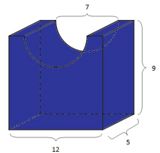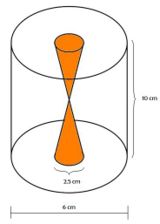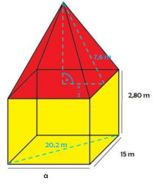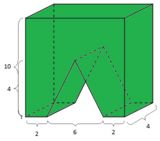verschiedene Körper: Unterschied zwischen den Versionen
Aus DMUW-Wiki
K |
(Änderung Text) |
||
| Zeile 15: | Zeile 15: | ||
| [[Bild:Haus_DorotheaRauscherneu_26.09.jpg|160px]] || Pyramide und Quader || <math> V = G \cdot h + a \cdot b \cdot c</math> | | [[Bild:Haus_DorotheaRauscherneu_26.09.jpg|160px]] || Pyramide und Quader || <math> V = G \cdot h + a \cdot b \cdot c</math> | ||
|- | |- | ||
| − | | [[Bild:Gartenstein_DorotheaRauscher_26.09.jpg|160px]] || Quader mit ausgeschnittenem Prisma || <math> V = a \cdot b \cdot c - G \cdot h</math> | + | | [[Bild:Gartenstein_DorotheaRauscher_26.09.jpg|160px]] || Quader mit ausgeschnittenem Prisma (liegend) || <math> V = a \cdot b \cdot c - G \cdot h</math> |
|} | |} | ||
</div> | </div> | ||
Version vom 21. Oktober 2009, 19:48 Uhr
zusammengesetzte Körper
In dieser Aufgabe sollst du das Volumen zusammengesetzter Körper bestimmen.Davor aber sollst du angeben, um welche Körper es sich handelt und die passenden Formeln zuordnen.
 |
Quader mit ausgeschnittenem halbem Zylinder | 
|
 |
zwei Kegel in Zylinder | 
|
 |
Pyramide und Quader | 
|
 |
Quader mit ausgeschnittenem Prisma (liegend) | 
|
 Zurück zur vorherigen Aufgabe
Zurück zur vorherigen Aufgabe
